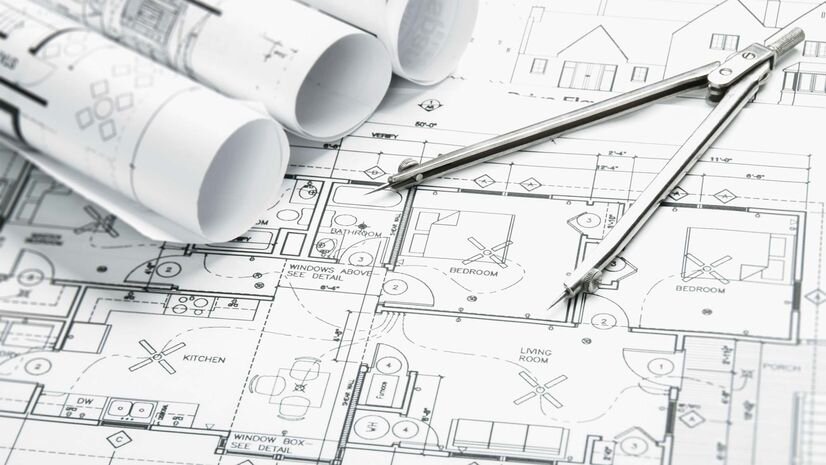
If you’re hoping to buy a house, the very first dollar figure you’ll want to know is the home’s price, of course. But a close second is its cost for each square foot—and the average cost for each square foot for a home in that neighborhood (or the median cost for a square foot of home space, which is actually a better representative of the middle ground of the market than the average). Here’s what you should know about these numbers, and how to use them to your advantage as you shop for a home.
How to calculate the square foot costs for a home?
Typically, a home’s cost for a square foot is prominently featured on the listing—both online as well as in those property information sheets you get at an open house. But a home’s price by the square foot doesn’t tell you much on its own. This number is best understood in comparison with similar homes in the surrounding market.
So your next step should be to type in the city, neighborhood, or ZIP code of interest into a site like realtor.com/local. This will give you the median cost a square foot for homes in that area of your city (as well as median asking price, closing price, and number of homes for sale in the local market—all useful info during a house hunt).
What’s the median or average price for each square foot in a home?
It’s important to know the difference between the median price and the average, or mean, price. The average price is simply the arithmetic mean, calculated as the total of all home sales, divided by the number of sales. An average sales price can be skewed by a few higher or lower home values.
The median, however, is the value separating the higher half of a data sample from the lower half. If all of the real estate property prices were lined up by value, the home sale in the middle would represent the median home value.
According to the latest estimates, the median price for each square foot for a home in the United States is $123. But that can vary widely based on where you live and other factors.
For instance, on the low end, you’ll pay $24 a square foot in Detroit. On the expensive end, in San Francisco, $810. So why such a wide range?
Well, it’s no secret that certain neighborhoods are considered more desirable than others, and fetch a better price as a result.
“The hotter the neighborhood, the higher the price per square foot,” says Anthony Stellini, a Realtor® with RSR, a division of the real estate firm Nourmand & Associates. But odds are you knew that already. What you may not know is how this info can help you get a better deal on a house. More on that next!
How cost per square foot can help you negotiate?
When you run your comparison of a home’s cost per square foot with the neighborhood median, you can use that information to help you determine whether a place is a bargain or overpriced.
Let’s say you see a home you love priced at $150 per square foot, but then you find that the median price for a square foot for the neighborhood is $135. This suggests the cost of the home you’re looking at could be too expensive—which spells an opportunity for you to negotiate for a lower purchase price. Just point out to the sellers that homes of similar size in the area cost far less. Or, conversely, if the median price a square foot is $135 but this home is only $120, you may have a bargain in your crosshairs that you should snap right up!
Of course, as a buyer you know there’s more to consider than the cost for each square foot of housing.
A single-family home on 5 acres of real estate will generally be worth more than one with the same square footage, but on a small-size lot. A new home generally costs more. And a large house may cost more overall because of higher labor costs and total construction costs, but the market will only pay so much. A house may actually sell for less than you might expect, based on its size, if it is overbuilt for the area.
Why price per square foot standards vary by area?
Because there are no official laws governing the process of measuring and calculating residential square footage, there are often wide discrepancies when it comes to the final figure.
Standards for measuring and calculating residential square footage are set by the American National Standards Institute (ANSI). But bear in mind compliance with ANSI guidelines is completely voluntary. So, while one seller might include an unfinished basement or a garage in the home’s overall square footage — both no-nos by ANSI standards — another might not, leaving you comparing apples to oranges anyway. Others may include vast amount of unusable but open space created by vaulted ceilings, meaning a home with less square footage may actually provide you with more walking around room. Walking through the home is the best way to get a feel for how much living space you can really enjoy.
If you’re looking at a home that doesn’t have its square footage listed, contact the county tax assessors’ office to find out how you can access the property’s tax records, which are public documents that will specify the square footage of the home’s living space. In many counties, this information is available online, making it quick and easy to find your answer.
The bottom line is, while price per square foot provides a point of comparison, unless homes are completely uniform, it’s unwise to allow it to be your lone deciding factor.